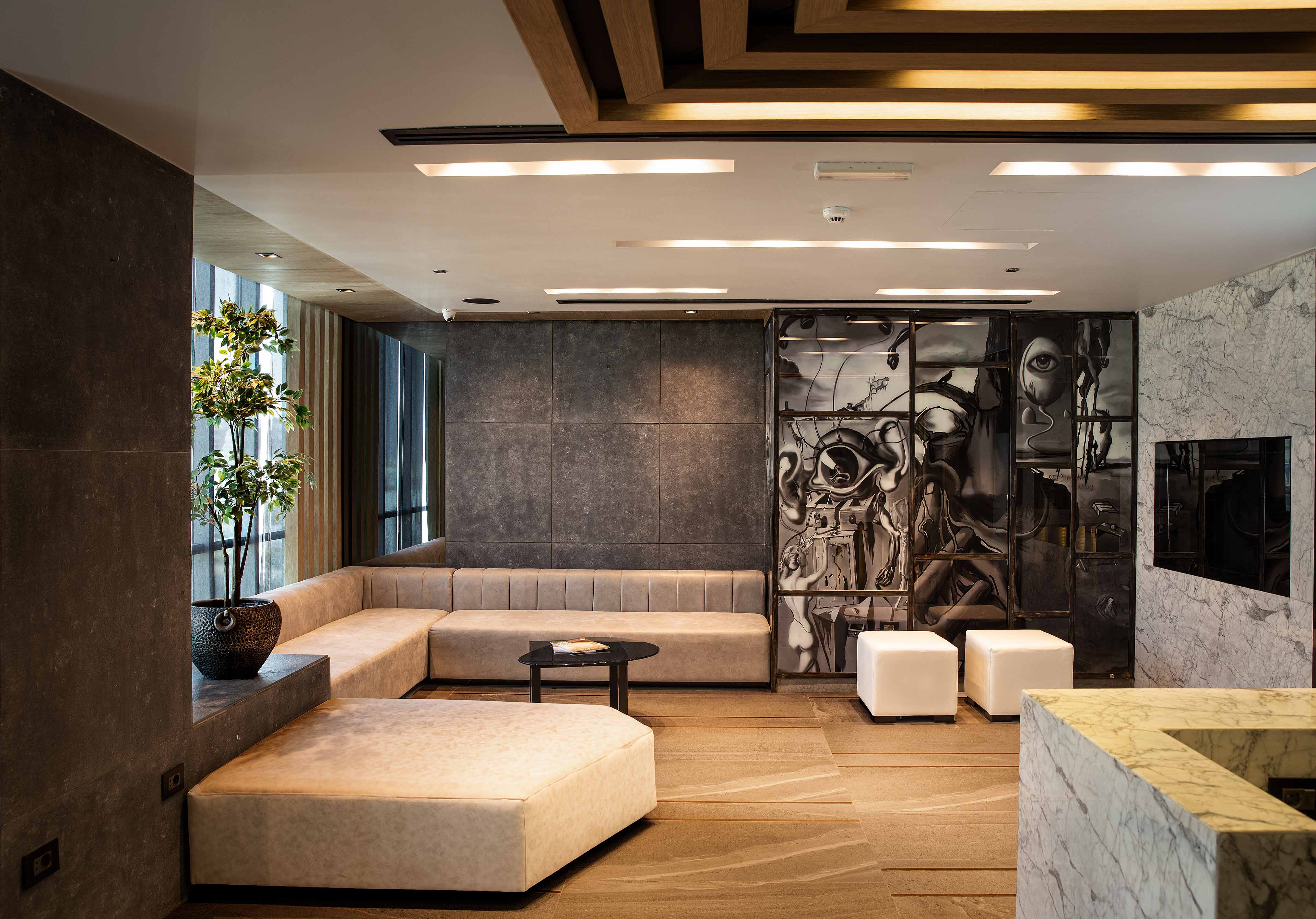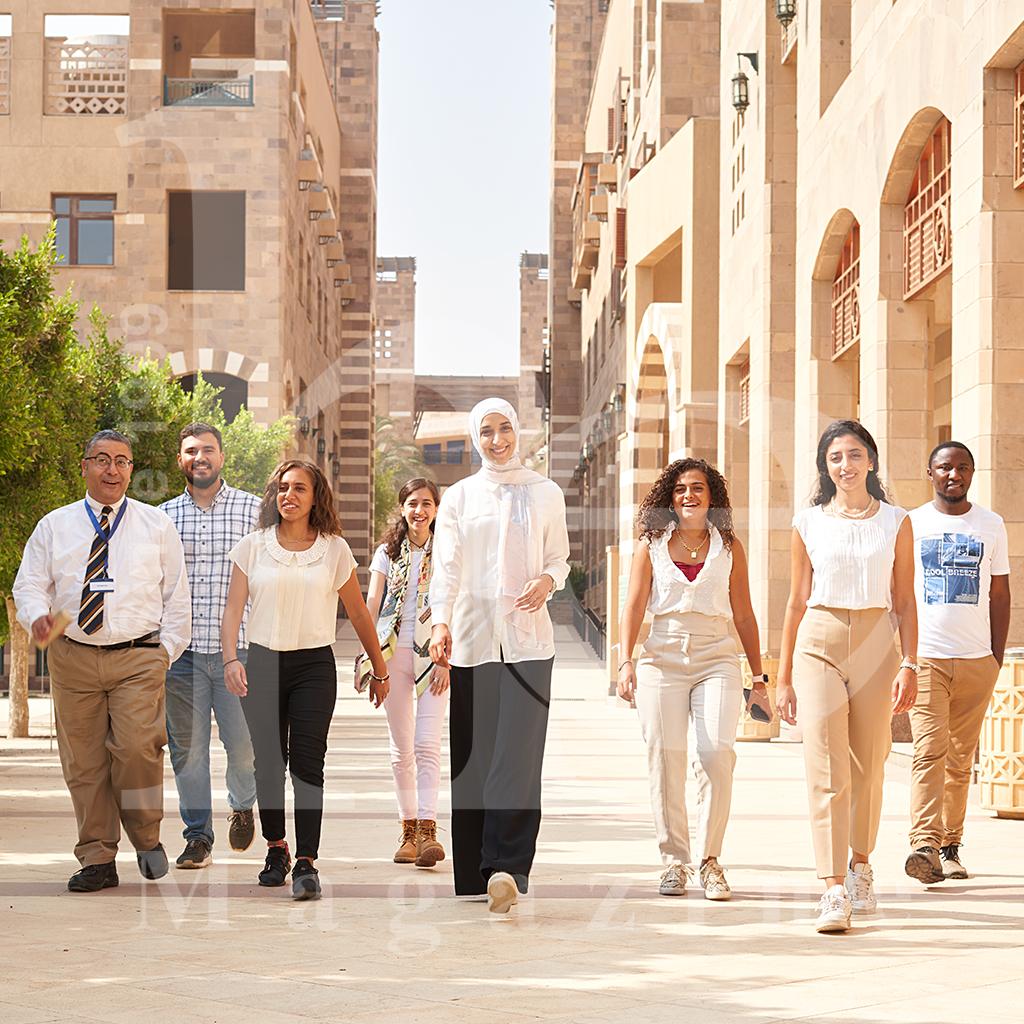
Written by: Yasmeen Ebada
Date: 2020-12-02
Art is absolute, and so is interior design

When we think of interior designs, one of the first names that come to mind is the elegant work of Raja A. Kabil. Kabil founded her interior design firm, Evolve Interiors, in 2002. A winner of one of the profession’s most prestigious awards, Kabil’s work speaks for itself. The Andrew Martin Interior Designer of the Year Award is the world’s first international interior design award and is the most prestigious.
Raja A. Kabil, the internationally recognized interior designer, has always recognized her love of art and beauty ever since she was a little girl.Kabil’s love of painting and handcraft is what led her to pursue an interior design career. Even in school, Kabil enjoyed her physics and geometry classes. When it was time to decide what to study in college, it was a no-brainer. She entered the school of fine arts and studied interior design because, in her own words, “all of my passions can manifest in helping people realize their perspective of beauty in the spaces they aspire to live in.”
Kabil has always looked at the world from a creative standpoint.
“I have always managed to see things differently and design and redesign what appeals to the eye. This has given me a great deal of satisfaction,” she said.
Their goal at her interior design firm, Evolve Interiors, is to help design a space for their clients while implementing both functionality and aestheticism.
There is a reason why Kabil won the profession’s most prestigious award, and a part of it is because she invests time in understanding her clients’ needs and desires. Her design styles are eccentric, eclectic, and uniquely personal, she said.
“My designs are always inspired by the people who will live in the space. I consider myself a design interpreter in a cool way,” she said.
Kabil’s design strategy includes her practicality of space utilization and translating her client’s notion of beauty into that space. She also implements variety in her designs and avoids repeating the same designs.
“I fear mixing materials and textures in a way that I have done before, and that’s why it is hard to point out two projects as my own,” she said. “Every time I get a design brief, I fly off in a world of my own and capture and translate my ideas into spaces, textures, materials, and colors, hoping I land it all somewhere cool and eccentric.”

In 2016, Kabil was awarded the profession’s most prestigious award: the Andrew Martin Interior Designer of the Year Award.
“It was like going to the World Cup for a football player,” she said. “It’s the epitome of what I do. That recognition means that I play with the best in the world. However, my eyes have always been on the cup. One day, I will be on the podium. This pushes me to work harder every day.”
One of Kabil’s favorite projects is designing the interior of the Palais Aziza & Spa, a boutique hotel in Marrakech, Morocco.
“I studied the rich Moroccan culture and explored the different design elements and colors that are associated with the different tribes, villages and districts of the country and managed to reflect it into every corner of the project,” she said. “The result was a diversified and harmonious design which offered the guests a luxurious and cozy space with a new experience for each time they returned.”
Kabil is especially proud that the design approach pushed guests to come back for a new experience.
Despite her success, Kabil has many goals, including designing her ultimate dream project: a retreat resort ecolodge.
“Through that project, I will be able to reflect the core concepts of spiritual awakening into the interior design. The design will consider the body, mind, and soul alignment through working of materials gifted to us by nature,” she said. “The application of the bio geometry and feng shui techniques will create a space that is practical, comfortable for the eye and soothing for the soul.”
Despite 2020 being a tough year for everyone because of the global pandemic, Kabil has most certainly used this time to her advantage.
“As much as the global pandemic has hurt businesses with the lockdown and economic slowdown, it has given me a chance to reflect more on my art. It was a chance to paint more, witness more, and better understand myself. It was a recharging break to refuel my creativity and dig deeper into my well of creative essence,” she said.
Apart from interior design, Kabil also designs furniture pieces. She is currently working on a project, Metamorphose, and applies the same design principles and purpose that she carries in her designs and translates it into furniture.
“I want to make limited furniture pieces available to unique people with aspiration at a reasonable price. I will dispatch design collections into seasons, and no two seasons will look the same. Hence, my clients will be sure that at different points in time, no two homes will end up even remotely similar,” she said.
One of the most recent projects that she is particularly proud of was implementing the interior design of a small apartment inside a new real estate compound in New Cairo City.
“While it is rewarding to work on hotels, schools, hospitals, and mansions, there was a new level of satisfaction in facing the challenges of utilizing a small space and coming up with creative solutions to accommodate luxurious living utilities and expand the look and feel of that tiny residential apartment,” she said.

She enjoyed reflecting Salvador Dalí, one of the most renowned artists of all time, in another recent project. She reflected the “Eye”, one of Dalí’s most popular pieces of art, on the glass cladding in an ophthalmologist’s office.
“You can reflect on the beauty of the “Eye” while you wait to get your treatment. I was hoping this theme would decrease part of the patients’ worry and drive them into a more soothing state,” she said.
In terms of the real estate sector, Kabil said there is a rise in residential compound living.
“In a way, it [the rise] is a natural evolution to offering better living conditions for the more affluent. However, I dream of being more involved in urban design. I see there is more room for implementing our regular buildings and structures in less fortunate places. It is more appetizing to the eye and more practical to improve the inhabitant’s quality of life,” she said. “I’m most certainly willing to engage in pro bono work to design or redesign a project of such nature.”
Her advice for her clients is to witness and reflect on many styles before making a decision.
“Most of the time, we are stuck in our nurtured paradigms, and we grow to love the spaces that we grew up in. However, exposure to a variety of styles may help evolve our preferences,” she said. “Review design websites and interior designers’ social media accounts until you feel you’re starting to visualize the place you want to live in. Now, you are prepared to meet your interior designer to help you translate that vision into reality.”
Kabil believes the interior design industry is changing in an exciting way because of the increase in choices and the entry of new players.
“It becomes far more interesting because of the abundance of possibilities. The growth of the digital space and the client’s engagement has made ideas more abundant and possibilities less limited. Of course, that impacts how we do business and has increased competition. However, I believe this benefits the end game,” she said.

Trends, according to Kabil, have less of an impact on developing countries and some of the communities in the Middle East than other European and North American markets where people have become more accustomed to shorter turnover durations for their living space designs. The Western lifestyle is different in the sense that there are more living space transitions. For example, teenagers move out of the house when they graduate from high school, then they move to another space in the following years (maybe three to four different cities), then they finally move into a bigger family house and lastly, they finally settle into a retirement condo, she said.
“That’s different here. Hence, design trends are considered, but the client’s personal preference is the lead,” she said.
One of the biggest challenges that interior designers face in Egypt is the market size.
“Our socioeconomic structure mandates a relatively small number of customers who can
afford design services and because of that we have adjusted our work structure, including coming up with more flexible pricing and payment models in addition to expanding our business in the region,” she said.
Kabil wants to expand her work globally, especially in the Middle East and Europe.
“This is partly a business decision and is partly because I want new exposure and new design challenges. This is an area of business where I feel I need to put effort into to expand. It is most certainly enjoyable to learn about new cultures and meet interesting people during the execution of the projects,” she said.
Her advice for young designers is to understand that creativity is only a reincarnation of your life experiences.
“You will never run out of creative juices as long as you stay curious about the world around you and the people in it. Watch nature carefully. It has been designed by the ultimate creator. Amazing lessons are lying behind every rock waiting to be implemented in your next project,” she said.





